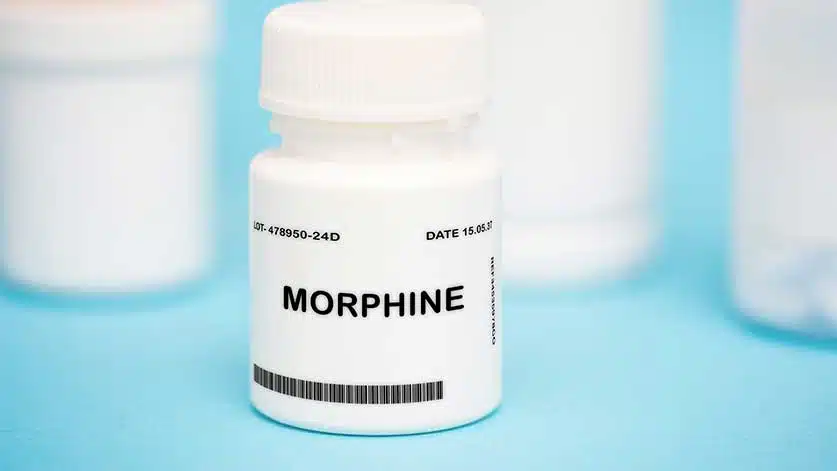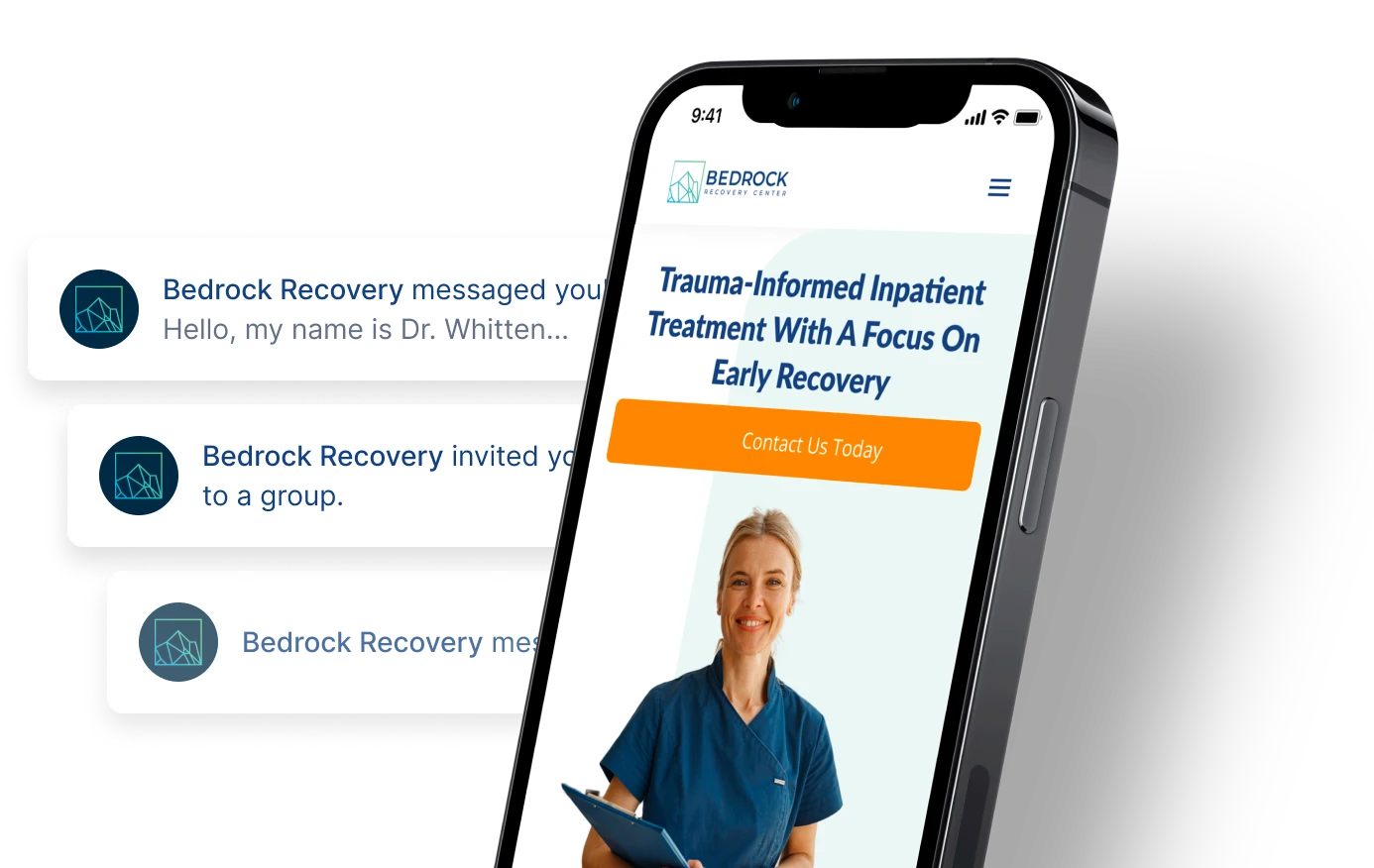
Morphine is an opiate derived from the opium poppy. This painkiller has been in use since 1805 and is highly addictive.
Historical accounts of morphine addiction in the United States go back to the mid-19th century, when recovering Civil War soldiers began to experience physical dependency after using morphine for pain relief.
How Morphine Affects The Brain And Body
Opioids like morphine affect the brain by interacting with opioid receptors and triggering the central nervous system’s reward center.
This interaction causes increased dopamine levels, which initiate the feelings of euphoria that people generally associate with an opioid high.
With continued morphine use, the brain loses its ability to function normally without morphine.
Forms Of Morphine
Morphine is sold as a pill with an extended release and immediate release from. It can also be taken orally, as a liquid, or administered through an IV or as a suppository.
Morphine Side Effects
Morphine causes various side effects. Generally, the side effects of prescribed morphine use are minimal, but there are rare cases of more severe side effects, including seizures.
The side effects of morphine can include:
- drowsiness
- stomach cramps
- dry mouth
- mood swings
- nervousness
- problems urinating
- pain when urinating
- blue or purple skin
- hallucinations
- fever, sweating
- confusion
- diarrhea
- nausea
- vomiting
- abnormal periods
- seizures
- rash
- hives
- swelling of the face
- breathing problems
Methods Of Morphine Abuse
There are a few different methods of morphine abuse.
Oral
Oral morphine abuse usually involves using morphine pills without a prescription or taking a larger dose than prescribed.
Snorting
People use snorting as a method of abuse by crushing morphine pills into powder and snorting it for a more immediate, intense high.
Injection
People use injection as a method of abuse by dissolving the powder from morphine pills in water and injecting the liquid into a vein.
Street Names For Morphine
The street names for morphine include:
- m
- Miss Emma
- monkey
- white Stuff
- dreamer
- ensel
- first line
- god’s drug
- hows
- mister blue
- morf
- morpho
- unkie
Signs Of Morphine Addiction
There are some common signs of Morphine addiction.
Common signs of morphine abuse include:
- broken sleep
- drowsiness
- problems concentrating
- constipation
- sexual dysfunction
- speech problems
- hallucinations
- doctor shopping
- spending money on morphine even if you can’t afford it
- driving or taking other risks after taking the drug
- problems at work or school
- lack of motivation
- weight loss
- lack of self grooming
- being secretive
- drastic behavior changes
- money problems
Risks Of Morphine Abuse
There are both short-term and long-term risks of morphine abuse.
Short-term risks
There are several short-term risks of morphine abuse.
The short-term risks of morphine abuse include:
- physical dependence
- drowsiness
- nausea
- vomiting
- dry mouth
- itchy skin
- high blood pressure
Long-term risks
There are several long-term risks of morphine abuse.
The long-term risks of morphine abuse include:
- overdose
- death
- increased chronic pain
- tolerance
- breathing issues
- stiff muscles
- hormonal imbalance
- immunosuppression
- involuntary muscle spasms
- abnormal heart rhythms
- heart attack
- increased risk of broken bones
- long term constipation
Morphine Detection Windows
Drug tests can be used to detect opiates like morphine. The detection windows for morphine vary based on the type of sample taken, the extent of the individual’s drug use, and numerous other factors.
Urine
A urine drug test can detect morphine for one to three days after use. This is the most common form of drug test.
Saliva
A drug test based on saliva will only detect morphine if the person used it during the past 24 to 48 hours.
Blood
Morphine metabolites can be detected in blood up to 48 hours after use. This kind of drug test is usually performed in a hospital setting.
Hair Follicle
Signs of morphine use can be found in a hair follicle for up to three months after use, but it takes around 30 days from the first use for the drug to be detectable in a hair follicle.
Morphine Withdrawal Symptoms
Morphine withdrawal can be severe and result in a combination of physical and psychological symptoms.
The symptoms of Morphine withdrawal include:
- cravings
- vomiting
- nausea
- inability to sleep
- anxiety
- sweating
- hot and cold flashes
- muscle cramps
- watery eyes and nose
- diarrhea
- muscle spasms
- sleeping problems
- feeling sick
- fatigue
No one should go through morphine withdrawal alone, as dangerous symptoms do occur in some cases.
Signs Of A Morphine Overdose
A morphine overdose is an emergency situation that can result in death.
If you or a loved one are experiencing signs of a potential overdose, call 911 immediately and administer Narcan (naloxone), if available.
The signs of morphine overdose include:
- shallow breathing
- drowsiness
- seizures
- itching
- flushed skin
- pupils that don’t react
- wheezing
- low blood pressure
- vomiting
- nausea
- quick to anger
- a feeling of unease
- paranoia
- hallucinations
- anxiety
- depression
- nightmares
Morphine Addiction Treatment Options
There are several effective inpatient and outpatient morphine addiction treatment options.
Detoxification
There are several methods used for opioid detox, including:
- stopping the drug immediately without medication to help with the side effects of withdrawal
- detoxing under the supervision of a medical professional who administers medications to reduce withdrawal symptoms
- using alternative medicines such as methadone or Suboxone to prevent withdrawal and minimize the risks of drug abuse
Therapy
In-depth therapy, when combined with recovery medications, can help someone reach long-term recovery by addressing the root causes of addiction as well as other co-occurring disorders.
Behavioral health therapy and counseling for addiction and co-occurring mental health disorders are often an important part of opioid treatment.
Medication-Assisted Treatment (MAT)
Medication-Assisted Treatment (MAT) is a treatment approach used by licensed healthcare providers that combines medications with therapy.
MAT decreases opioid use, opioid overdoses, and opioid death. MAT also increases the chance someone will stay in treatment and offers improved outcomes for pregnant people who are living with an opioid addiction.
Aftercare
Aftercare is a service that is provided by a treatment center that helps those recovering from morphine addiction to adjust to everyday life after getting through the beginning of treatment.
Aftercare is provided in several ways, including:
- check-ups
- individual therapy sessions
- group counseling sessions
- phone counseling sessions
Get Treatment For An Opiate Addiction Today
While it may seem impossible, you or a loved one can recover from a prescription drug addiction.
Contact our team at Bedrock Recovery Center today to learn more about how we can help you recover from a substance use disorder.
- American Family Physician https://www.aafp.org/pubs/afp/issues/2010/0301/p635.html
- Arkansas Takeback https://artakeback.org/wellness/opioids-harm-the-body-brain/
- Cleveland Clinic https://my.clevelandclinic.org/health/drugs/21127-opioids
- Drug Enforcement Administration (DEA) https://www.dea.gov/sites/default/files/drug_of_abuse.pdf
- Mayo Clinic https://www.mayoclinic.org/diseases-conditions/drug-addiction/symptoms-causes/syc-20365112/
- National Institute On Drug Abuse (NIDA) https://nida.nih.gov/publications/drugfacts/prescription-opioids
- National Institute On Drug Abuse (NIDA) https://nida.nih.gov/publications/effective-treatments-opioid-addiction/
- National Institute On Drug Abuse (NIDA) https://nida.nih.gov/publications/drugs-brains-behavior-science-addiction/treatment-recovery
- National Library Of Medicine https://www.ncbi.nlm.nih.gov/books/NBK310652/
- National Library Of Medicine: Medline Plus https://medlineplus.gov/druginfo/meds/a682133.html#side-effects
- National Library Of Medicine: PubMed https://www.ncbi.nlm.nih.gov/pmc/articles/PMC3830170/
- National Library Of Medicine: PubMed https://www.ncbi.nlm.nih.gov/pmc/articles/PMC2670779/
- National Library Of Medicine: StatPearls https://www.ncbi.nlm.nih.gov/books/NBK526115/#:~:text=Morphine%20administration%20can%20occur%20through,of%20acute%20and%20chronic%20pain.
- National Library Of Medicine: StatPearls https://www.ncbi.nlm.nih.gov/books/NBK470415/#:~:text=The%20breathing%20is%20usually%20impaired,dyspnea%2C%20wheezing%20and%20frothy%20sputum
- Science Direct https://www.sciencedirect.com/topics/neuroscience/morphine-addiction
- Substance Abuse And Mental Health Services Administration (SAMHSA) https://store.samhsa.gov/sites/default/files/d7/priv/sma12-4668.pdf
